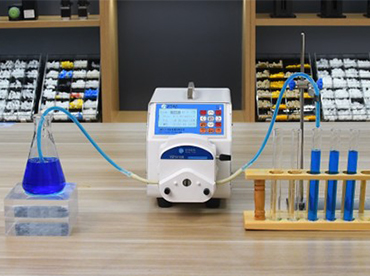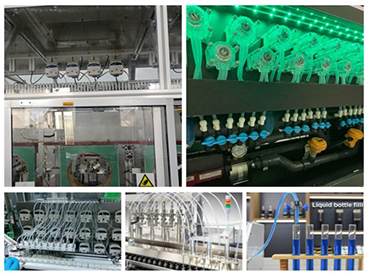
Peristaltic pump only contacts with pump tube without polluting pump itself, thus liquid aseptic transfer can be realized.
In biopharmaceutical industry, isolation and precise control of fluid is of great significance. Fail to meet these requirements can cause great economic damage. Runze Fluid can assure your production safety in accordance with following reasons:
Pumps have played a crucial role throughout the COVID-19 pandemic helping to keep essential services running, and food and products available to people, but another important area where pumps will have a major impact is in the biopharmaceutical industry which is hard at work manufacturing a vaccine so society can return to normal. Here, we look at four commonly used pumps that are found in biopharmaceutical applications.

Pumps are used in biopharmaceutical processes to move fluids – such as buffer, media and water for injection – through tubing to the process equipment.
Due to the need to maintain hygiene and sanitary standards, they must be able to prevent contamination and be able to be validated.
To achieve this, they may use single-use components or be designed to be cleaned easily.
There are several types of positive displacement pumps commonly used in the biopharmaceutical industry including peristaltic, diaphragm, rotary lobe and piston pumps.
Peristaltic pumps
The term “peristaltic pumps” refers to hose or tube pumps, and are commonly used in biopharmaceutics for applications such as reagent and product dosing, and blood transfer.
Although there are specific differences between hoses and tubing, these terms are generally used interchangeably.
Peristaltic pumps are self-priming rotary positive displacement pumps, and have a hose that is located in the tubing bed between the roller and housing.
The roller has a number of “rollers” or “shoes” attached to the external circumference.
During operation, the liquid is trapped between these shoes or rollers, and as these move across the hose, the hose is occluded, pushing the liquid along. The hose behind the shoe or roller recovers its shape, creating a vacuum and drawing more fluid in.
As the fluid is completely contained within the tube or hose and connectors, process validation is simplified.
For biopharmaceutical processes, while the hose or tubing can be treated as multi-use, where it is cleaned and sterilised between batches, it is typically treated as single-use and disposed of after each process to prevent cross-contamination with following batches.
As maintaining fluid path sterility is key in these processes, the hose or tube is manufactured from biocompatible materials that meet purity requirements.
The flow rate is determined by multiplying speed (rpm) by the volume of trapped liquid. The volume moved is consistent, even under a wide range of viscosities or densities. The flow rate is therefore directly proportional to the gearbox speed.
The size of the hose or tube is determined by fluid viscosity and the deliverable flow, with higher viscosity products requiring a large bore size tube, but a low running speed.
In downstream processing – including tangential flow filtration and high-performance liquid chromatography – flow linearity with only trace pulsation and a wide pressure range is desired.
The key advantage of peristaltic pumps is the sealless design with no moving parts in the pumped fluid. Discharge pulsations are low, self-priming is good, the pump can handle high viscosities, and capacity accuracy is maintained for good process control. The pumps can also be run dry.
As they are low shear – unlike centrifugal, gear or other types of rotating pumps – cell suspensions will not be damaged when they are circulated or pumped, making them ideal for biopharmaceutics where product being pumped can be damaged by high fluid velocities or contact with mechanical parts.
While hosing or tubing occlusion can still cause cell death, this can be mitigated by reducing pump speed and increasing hosing or tubing diameter.
The amount of shear allowed is dependent on the sensitivity to shear forces due to flow of the product being pumped. For example, peptides and small proteins are relatively insensitive, while mammalian cells and vaccines can be very sensitive.
Selecting the right sized pump is one way to ensure shear is kept to a minimum to maintain product integrity. Low shear is further achieved by lowering the pump’s speed and increasing the tubing bore size to reduce fluid velocity.
Hose or tubing life and material are critical for maintaining performance as a failure can cause the loss of an entire campaign, but these are also the biggest concerns for peristaltic pumps in biopharmaceutical applications as the main wearing part of the pump is the hose or tube.
If properly and conservatively selected, the hose, and therefore the pump, will give long operating life between overhauls. Preventative maintenance is also key. But if care is not taken, hose life can be short.